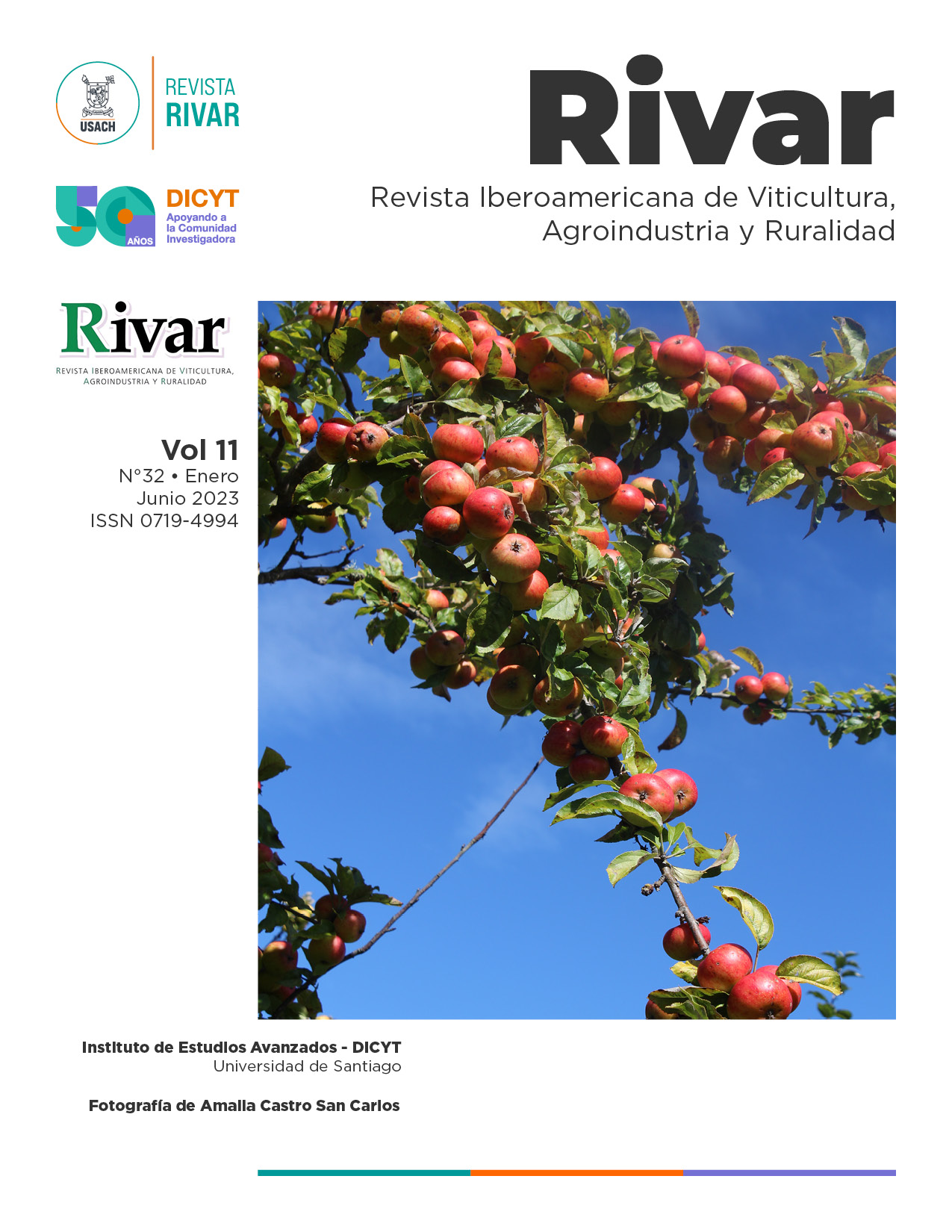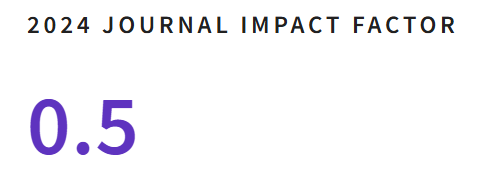Feedlot Waste Compost in a Soil System - Lettuce Cultivation
DOI:
https://doi.org/10.35588/12br5m17Keywords:
manure, lettuce, contamination, apparent nitrogen recovery, manure, lettuce, pollution, apparent nitrogen recoveyAbstract
The soil-crop systems of the peri-urban area allow the recovery of chemical elements from the manure generated in intensive livestock production, reducing the risk of contamination of groundwater. This study evaluated the effect of the application of different doses of feedlot waste compost on the lettuce crop (Lactuca sativa L.) and on the chemical, physicochemical, and biological properties of the soil. In two consecutive years, greenhouse experiments were carried out applying doses equivalent to 128 and 500 kg ha-1 of nitrogen, determining fresh weight and apparent efficiency of nitrogen recovery in the crop, and in the soil, nitrate content, organic matter, activity overall biological, electrical conductivity, and pH. The yield of the lettuce crop increased between 29 and 55%, with apparent N recovery efficiencies of less than 5%. In the soil, the effects were mainly manifested in the first centimeters, with increases in the contents of organic matter, global biological activity, and electrical conductivity. On the other hand, there were no significant changes in the pH or nitrate content at depths greater than those reached by the roots of the crop.
Downloads
References
Albiach, R. (1997). Estudio de varios índices de actividad biológica del suelo en relación a diferentes aportaciones de enmiendas orgánicas. [Tesis doctoral]. Universitat de Valencia.
Aruani, M.C., Gili, P., Fernández, L., Junyent, R.G., Reeb, P., y Sánchez, E. (2008). Utilización del nitrógeno en diferentes manejos de fertilización en lechuga (Lactuca sativa L.) y su efecto sobre algunas variables biológicas del suelo, Neuquén-Argentina. Agro Sur, 36(3): 147-157. http://dx.doi.org/10.4206/agrosur.2008.v36n3-04
Bittman, S. y Mikkelsen, R. (2009). Emisiones de amoníaco de operaciones agrícolas: Ganadería. Mejores Cultivos, 93(1), 28-31.
Botana, M.I. (2003). Una aproximación al análisis de un sector periurbano platense: Conflictos e incidencias de actores sociales en el territorio. Anales Linta, 3(2), 91-102.
Britto, D.T. y Kronzucker, H.J. (2002). NH4+ Toxicity in Higher Plants: A Critical Review. Journal of Plant Physiology, 159, 567-584. https://doi.org/10.1078/0176-1617-0774
Bugarín-Montoya, R., Virgen-Ponce, M., Galvis-Spinola, A., García-Paredes, D., Hernández-Mendoza, T., Bojorquez-Serrano, I. y Madueño-Molina, A. (2011). Extracción de nitrógeno en seis especies olerícolas durante su ciclo de crecimiento. Bioagro, 23(2), 93-98.
Chang, C., Sommerfeldt, T.G. y Entz, T. (1991). Soil Chemistry After Eleven Annual Applications of Cattle Feedlot Manure. Journal of Environmental Quality, 20(2), 475-480. https://doi.org/10.2134/jeq1991.00472425002000020022x
Cogger, C.G., Bary, A.I., Fransen, S.C. y Sullivan, D.M. (2001). Seven Years of Biosolids Versus Inorganic Nitrogen Applications to Tall Fescue. Journal of Environmental Quality, 30(6), 2188-2194. https://doi.org/10.2134/jeq2001.2188
Degioanni, A. y Amín, M.S. (2018). Función depuradora del suelo. Ab Intus, 2, 83-88.
Di Rienzo J.A., Casanoves F., Balzarini M.G., González L., Tablada, M. y Robledo, C.W. (2016). Infostat Versión 2016. Grupo InfoStat, FCA, Universidad Nacional de Córdoba.
Fontes, P.C.R., Pereira, P.R.G. y Conde, R.M. (1997). Critical Chlorophyll, Total Nitrogen, and Nitrate‐nitrogen in Leaves Associated to Maximum Lettuce Yield. Journal of Plant Nutrition, 20(9), 1061-1068. https://doi.org/10.1080/01904169709365318
Huerta Muñoz, E., Cruz Hernández, J., Aguirre Álvarez, L., Caballero Mata, R., y Pérez Hidalgo, L.F. (2015). Toxicidad de fertilizantes orgánicos estimada con bioensayo de germinación de lechuga. Terra Latinoamericana, 33(2), 179-185.
Klute, A. (1988). Methods of Soil Analysis. Physical and Mineralogical Methods (2da. edición). American Society of Agronomy and Soil Science Society of America.
Lewis, D.R., McGechan, M.B. y McTaggart, I.P. (2003). Simulating Field-scale Nitrogen Management Scenarios Involving Fertiliser and Slurry Applications. Agricultural Systems, 76(1), 159-180. https://doi.org/10.1016/S0308-521X(02)00032-X
Maas, E.V. (1993). Testing Crops for Salinity Tolerance. En VV.AA., Proceedings of the Workshop on Adaptation of Plants to Soil Stresses (pp. 234-247). University of Nebraska.
Olivares-Campos, M.A., Hernández-Rodríguez, A., Vences-Contreras, C., Jáquez-Balderrama, J.L. y Ojeda-Barrios, D. (2012). Lombricomposta y composta de estiércol de ganado vacuno lechero como fertilizantes y mejoradores de suelo. Universidad y ciencia, 28(1), 27-37.
Osorio, M.E., Mesías, J.M., y Araya, R. (2013). Estiércol de vacuno estabilizado y daño por boro en lechuga (Lactuca sativa L.) cv. del río, en el valle de Lluta, Chile. Idesia (Arica), 31(1), 15-25. http://dx.doi.org/10.4067/s0718-34292013000100003
Page, A.L., Miller R.H. y Keeney D.R. (1982). Methods of Soil Analysis II. Chemical and Microbiological Properties. American Society of Agronomy, Soil Science Society of America.
Paterlini, H., González, M.V., y Picone, L.I. (2019). Producción de lechuga en un suelo con aplicación de compost de cama de pollo. Ciencia del Suelo, 37(1), 38-50.
Sánchez, T.M. (2010). Evaluación de la calidad de lechuga (Lactuca sativa L.) respecto a su contenido de nitratos y materia seca. Semiárida, 21, 29-36.
Smith, J.H. y Peterson, J.R. (1982). Recycling of Nitrogen through Land Application of Agricultural, Food Processing, and Municipal Wastes. Nitrogen in Agricultural Soils, 22, 791-831. https://doi.org/10.2134/agronmonogr22.c21
Trejo-Escareño, H.I., Salazar-Sosa, E., López-Martínez, J.D. y Vázquez-Vázquez, C. (2013). Impacto del estiércol bovino en el suelo y producción de forraje de maíz. Revista Mexicana de Ciencias Agrícolas, 4(5), 727-738. https://doi.org/10.29312/remexca.v4i5.1171
USDA (1999). Soil Quality Test Kit Guide. USDA-Agriculture Research Service, Soil Conservation Service.
Zemenchik, R.A. y Albrecht, K.A. (2002). Nitrogen Use Efficiency and Apparent Nitrogen Recovery of Kentucky Bluegrass, Smooth Bromegrass, and Orchardgrass. Agronomy Journal, 94, 421-428. https://doi.org/10.2134/agronj2002.4210
Zubillaga, M.S., Branzini, A. y Lavado, R.S. (2008). Problemas de fitotoxicidad en compost. Pilquen-Sección Agronomía, 9, 1-9.









